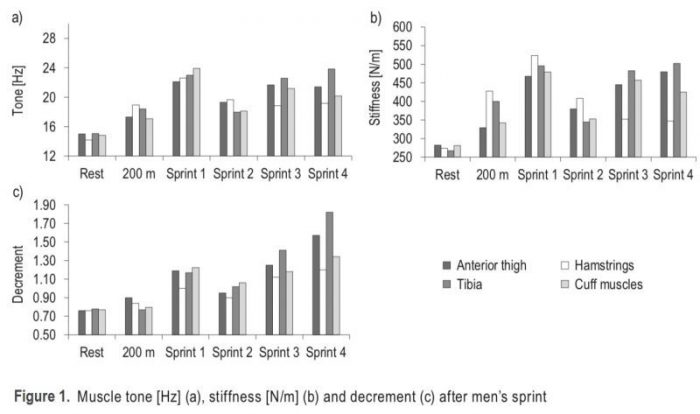Publications

Viscoelastic Properties Of Lower Extremity Muscles After Elite Track Cycling Sprint Events: A Case Report
Authors: Sebastian Klich 1, Igor Krymski 1, 2, Adam Kawczyński 1
Affiliations:
- University School of Physical Education in Wroclaw, Department of Paralympic Sport, Poland
- Polish Cycling Federation, National Team Coach, Andrzeja 1, 05 -800 Pruszkow, Poland
Journal: Central European Journal of Sport Sciences and Medicine - April 2020, Volume 29, No.1/2020 (DOI: 10.18276/cej.2020.1-01)
-
Field & Applications:
- Sport
- Treatment evaluation
- Muscle development / Performance
- Warm-up / Recovery
- Fatigue / Overtraining
Sprint cycling events require a high level of anaerobic capacity and, therefore, may affect peripheral fatigue throughout exercise-induced muscle damage. In fact, those alterations might decrease power generation.
This study was performed on a 23 years old male elite track cyclist taking part in a sprint event. The measurements included power output (W) and cadence (rpm), lactate concentration (La-), heart rate (bpm), Rating of Perceived Exertion scale and viscoelastic properties analysis.
The present study has shown a new approach to monitor the muscle properties of the lower extremity after 200 m flying start and repeated sprint races.
Therefore, we hypothesized that repeated sprint races might lead to alterations in viscoelastic properties of lower extremity muscles. In track cycling, especially in sprint events, these variations may lead to increased muscle fatigue. Furthermore, training control and monitoring related to the assessment of muscles properties can be a source of counteracting injuries and relieving fatigue.
Keywords: viscoelastic properties, muscle stiffness, creep, 200 m flying, case report

The 200 m flying start and repeated sprint races appear to affect the viscoelastic properties of lower extremity muscles in track cyclists. The increase of muscle tone, stiffness and decrement is followed by a decrease in relaxation time and creep.
This study has proved that the muscle fatigue mechanism is related to alterations in viscoelastic properties. Moreover, fatigue mechanisms might influence muscle outcomes, e.g. muscle activation, recruitment and fibers type.
This research presents the individual results of a single athlete, yet the main findings of the study could be useful information in programming specific workouts and recovery sessions.


